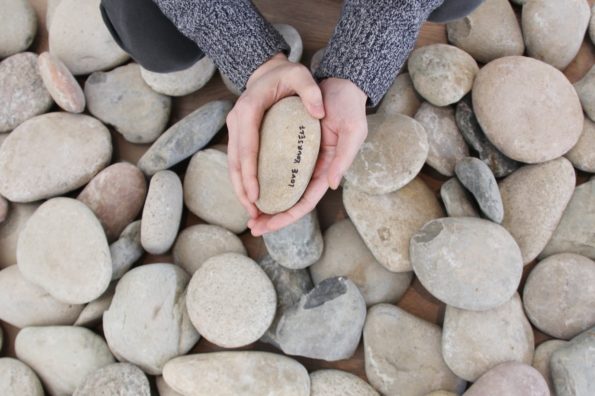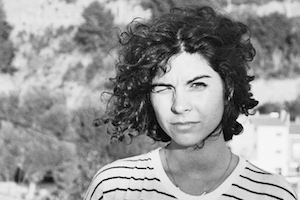Search
To search for an exact match, type the word or phrase you want in quotation marks.
A*DESK has been offering since 2002 contents about criticism and contemporary art. A*DESK has become consolidated thanks to all those who have believed in the project, all those who have followed us, debating, participating and collaborating. Many people have collaborated with A*DESK, and continue to do so. Their efforts, knowledge and belief in the project are what make it grow internationally. At A*DESK we have also generated work for over one hundred professionals in culture, from small collaborations with reviews and classes, to more prolonged and intense collaborations.
At A*DESK we believe in the need for free and universal access to culture and knowledge. We want to carry on being independent, remaining open to more ideas and opinions. If you believe in A*DESK, we need your backing to be able to continue. You can now participate in the project by supporting it. You can choose how much you want to contribute to the project.
You can decide how much you want to bring to the project.

A few months ago a lady took a work of art from Yoko Ono’s exhibition The Riverbed in Canada home with her. The work consisted in a river pebble on which the artist had written ‘Love Yourself’. An inscription on the wall that read ‘Choose a Stone and hold it until all your anger and sadness have been let go’ completed the installation, entitled Stone Piece. The audience was therefore invited to touch the stones, though not to take them away with them. The police are still trying to find the lady with the red scarf; the stone is valued at $17,000.
According to curator Meredith Chilton, The Riverbed was one of the most popular exhibitions in the history of the Gardiner Museum and generated huge audiences and reactions on social media, not all of them positive, as this tweet reveals:
‘Anyone willing to pay that call me. I have a gold mine in my backyard, be happy to sell one for a steal $2500 and I write on it what you want’.
The first controversial issue after the theft is that of the price, the eternal debate between the value of the raw material, the technique and the price of the artwork. Does the work need to be made of an extraordinary or luxurious material in order to be a fine piece of art? Does one need to possess great manual skills and a wonderful technique to be a respected artist? Contemporary art left these questions behind some time ago.
The exhibition, as stated by Ono in one of her interviews, has a therapeutic and spiritual quality designed to promote contemplation and connection through participation and community action. Many types of stones are attributed with healing properties. Some religions also attach value to certain types of stones. Muslims, for instance, have the Black Stone, Christians have the Cornerstone (metaphorically), Mormons have the Seer Stone, and Buddhists have the thought stone/gem (Chintamani). They all agree that the stone is a symbol of wisdom and light linked to their prophet (Muhammad, Jesus Christ, José Smith, Buddha). All these sacred stones are of unique origin: the Black Stone could be a meteorite, the Chintamani Stone is said to come from the Sirius star system, and the Seer Stone could be a secondary fossil, evidence of one of the first forms of life on Earth. What surprises uninitiated spectators about the idiosyncrasy of the stones in Stone Piece is the fact that they are ordinary river pebbles to which the artist attributes a magical and therapeutic power triggered by an act of faith of the viewer. Hence the controversy for the sum of $17,000, as we read in another tweet:
‘The real crime is a rock worth 17k with something scribbled on it’.
How much can a stone be worth and on what basis? The stones that fetch the highest prices on the market are precious stones, meteorites and the kidney stones of famous people. The price of precious stones varies according to the degree of imperfections, their beauty, rareness and demand for them. To date, the most expensive jewel sold at auction is the 59.6-carat pink diamond called The Raj Pink, which in 2017 was sold for $17.2 million at a Sotheby’s auction in Hong Kong.
Meteorites are also worth their weight in gold. One of the dearest is the Fukang meteorite, discovered in 2000 and auctioned off for €1.7 million. Catawiki auction house that specialises in exceptional articles says that ‘the pleasure of owning a meteorite resides in the romanticism of having something that isn’t from Earth and that could be one of the oldest things in the universe’. The Fukang meteorite owes its price to the bizarreness of its discovery (only 1% of all meteorites is pallasite) and to the fact that it is one of the oldest, dating back 4.5 million years — almost the age of the Earth.
The peculiarity of kidney stones, besides the fact that they are actually sold, lies in the body they have been removed from, in the fetishism surrounding the sufferer. In 2006 a kidney stone removed from William Shatner, Captain Kirk in the Star Trek series, fetched $75,000, a sum donated to the construction of a Habitat for Humanity home in Louisiana. And who would buy something like that? In this case, GoldenPalace online casino, that added it to its collection of rarities in a curio cabinet.
The stones in Stone Piece are different in size, polish and tones, and their surfaces are inscribed with words and sentences: Dream, Imagine, Remember, Love Yourself. The therapeutic quality attributed to them comes from their link to nature, the river water that has shaped them, erosion and the passage of time. So, the stones in Stone Piece haven’t been cut by the artist but ‘have been honed and shaped by water over time’, as we read in the press release, that highlights the fact that ‘Audience participation is key to completing The Riverbed‘, i.e., participation is more important than the objects per se. So if the museum focuses on the experience rather than the objects in the installation, it is funny that it should have attached so much importance to the theft of one of the stones and decide not to replace it with another.
‘But why did she steal it? She could’ve done it at home’.
In this case, the motivation for the theft doesn’t seem to have been economic. We could infer that it is a question of fetishism, of wanting to own an object that has belonged – or has been painstakingly selected – by Yoko Ono. Like kidney stones. Or it could also be an oversight, not having understood the instruction of putting the stone back where it was once the person had been released from their anger and sadness. Broadly speaking, we cannot touch the works on display in a museum, and when we can, we’re seldom allowed to take a part away with us, as we are in the case of some works by Felix González-Torres, for instance, or the closing of The Riverbed, where viewers were invited to take parts of the Mend Piece and Line Piece installations home with them, though not, for some reason, the stones in Stone Piece. In relation to this, in 1982 artist Ulises Carrión decided to tempt spectators with an installation he titled El robo del año (The Theft of the Year), consisting of a diamond on a cushion placed atop a pedestal inside a dark room, lit by a single shaft of light. The viewers were invited to enter the space where, protected by the darkness, they could touch the diamond. The ‘theft of the year’, however, didn’t take place in the museum but in the artist’s house during a dinner with friends. So the diamond wasn’t stolen for its symbolic value as an artwork, but for its material value.
Another possibility is that the thief is actually a detractor of Ono’s and of Conceptual Art who, in a rebellious moment, decided to steal an element from the installation. It wouldn’t be the first time that an artwork someone disagrees with is attacked. The same thing happened in Mexico in 2017, when artist Gabriel Orozco inaugurated an installation that feigned to be one of the supermarkets in the OXXO chain, with the same shelves and the same products, and even included replenishers and cashiers. The only difference between the street supermarket and the art gallery consisted in the fact that some articles in the latter had been manipulated by the artist by adding stickers featuring his characteristic circles and semicircles to the packaging. The shop accepted Orozco’s own currency for purchases, false notes also bearing Orozco’s characteristic circles that were handed to people at the entrance but could only be used to buy non-manipulated articles. An artist who preserved his identity under the pseudonym Peligro [Danger] considered that all that was a joke and decided to intervene by stealing an article. To be precise, he took a sack of cat food which he didn’t keep as an artwork but returned to its original use, giving some of it to his cat and then throwing the rest away.
Perhaps the lady in the red scarf returned the stone to the river. Should we understand her action as a performance, or as a criticism that urges us to reconsider the system of values in the art world and in our society? All that remains is for her to own up.

Nerea Arrojería is an art historian specialized in photography. Among her lines of interest is the still or moving image used in contemporary societies, inside or outside the museum.
"A desk is a dangerous place from which to watch the world" (John Le Carré)